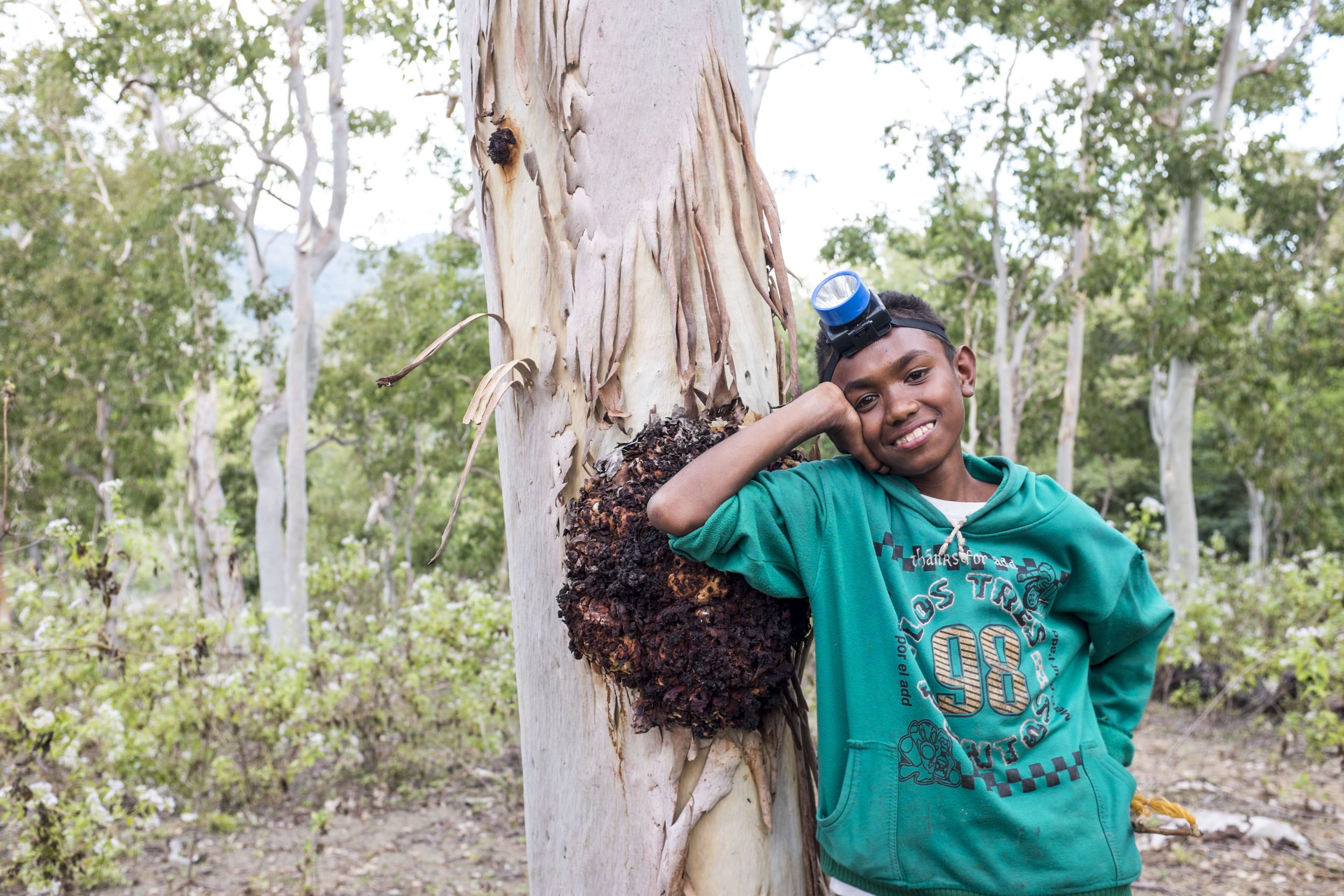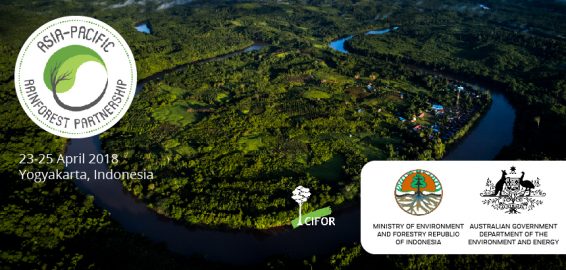Once upon a time, there was a scientist who traveled to West Timor, Indonesia to study the forests of Mutis-Timau. Her name was Ani Adiwinata Nawir, and she was curious to see how communities used forests to help their livelihoods while keeping their beautiful landscape in tact.
During her stay, she became fascinated with the Olin-Fobia community and their annual tradition of harvesting wild honey from the nearby Mount Mutis Nature Reserve. She found that their tradition was not only sweet, but also an excellent example of community-based landscape management. Developed into a fair-trade product with help of the World Wildlife Fund in Indonesia, the harvested “Mt. Mutis” honey had become commercially successful around Indonesia, bringing income to the community without involving the felling of trees.
But the story doesn’t end there. After speaking with colleagues from the Center for International Forestry Research (CIFOR), an idea emerged: to create a children’s book that tells the tale of the honey hunters.
“We observed a knowledge gap between older and younger generations,” says Ani. “Local wisdom and traditions aren’t always being passed on. We thought a book would help keep these traditions alive and motivate young people to learn more about forest conservation.”
She contacted Indonesian children’s book author Johanna Ernawati, who has long been interested in the traditions and origins of Indonesians living in remote parts of the archipelago, like Papua and Timor. She agreed to write the book, Secrets of the Mutis Honey Hunters, which was recently published in English and Bahasa Indonesia.
“This was a great opportunity for me to help educate Indonesians about their origin, their ancestry and the uniqueness of Indonesian forest culture,” says Ernawati.
The author used scientific research to inform her writing and also travelled to West Timor to visit the Olin-Fobia community and gather more information – and inspiration.
“The community is fascinating. They are truly sons and daughters of nature. They care about Mother Earth, about animals, the forest and family,” she says. “They know the forest is the source of life for their community, providing water, medicine, and prosperity from the sale of honey.”
Their forest knowledge, she learned, is based on legends and folk tales of the Mutis forest that have been passed down from generation to generation. Children are taught at an early age about the forests’ importance and why they need to preserve it.
The book is now being distributed to schools and government agencies tasked with educating children about the environment, in hopes for more children to understand the same.
TURNING THE PAGE
Secrets of the Mutis Honey Hunters tells the tale of brother-and-sister twins from Bonleu Village in the Mutis Valley. On their twelfth birthday, the twins’ father gives them a special gift: they’re allowed to join the village adults and go honey hunting in the forest.
Bapak Tobe, the village elder, leads a traditional Naketi ceremony for everyone to ask forgiveness of one another, as honey hunters must be pure of heart. The twins then venture into the forest and experience the ancient tradition of honey harvesting.
Readers experience this adventure through colorful images and playful text, which draw upon the research of Ani and fellow experts to teach about the Olin-Fobia culture and landscape.
“We included facts about their traditional houses, flora and fauna, the history of the local people and also how honey is made,” says Budhy Kristanty, a CIFOR communications officer who helped develop the project. “It’s a creative way to educate children.”
The team hopes that the book will be translated into Spanish and French, and a short animated video of the book, shown above, has also been produced.
“We hope other organizations will be inspired by the book to do similar projects,” says Ani. “In Indonesia, we need more efforts to educate younger generations, since they will be the ones to preserve the remaining forests.”
Ani says she and her team have received a significant number of requests from various institutions for the book – as well as good feedback from its audience.
“Our kids usually enjoy playtime the most, but today I started playing the animated video, and they all stopped playing and gathered around to watch,” says a teacher from Madania School in the West Java city of Bogor.
“Then the children all sat down, and I read the book to them. They were all so excited and wanted to hear it again and again.”
This book was published as part of the Kanoppi research project, a combined effort between the Center for International Forestry Research (CIFOR), the World Agroforestry Centre (ICRAF) and the Australian Centre for International Agricultural Research (ACIAR). This component of the Kanoppi project aims in part to contribute to policy recommendations that increase the comparative advantages of small-scale forestry management practices.
We want you to share Forests News content, which is licensed under Creative Commons Attribution-NonCommercial-ShareAlike 4.0 International (CC BY-NC-SA 4.0). This means you are free to redistribute our material for non-commercial purposes. All we ask is that you give Forests News appropriate credit and link to the original Forests News content, indicate if changes were made, and distribute your contributions under the same Creative Commons license. You must notify Forests News if you repost, reprint or reuse our materials by contacting forestsnews@cifor-icraf.org.

